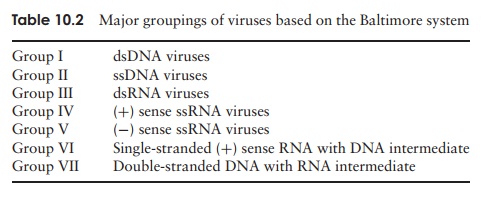Chapter: Essential Microbiology: Viruses
Classification of viruses
Classification
of viruses
As we saw, viruses are not considered to be strictly
living, and their classification is a complex issue. As with true organisms we
have species, genera, families and orders of viruses, but none of the higher
groupings (class, phylum, kingdom). Latin binomials (e.g. Homo sapiens, Escherichia coli), familiar from conventional
biological taxonomy, are not used for viruses; however, a proposal for
non-Latinised viral bi-nomials has been proposed. Originally, no attempt was
made to draw up any sort of phylogenetic relationship between the viruses, but
more recent developments in sequencing of viral genomes has meant that insights
are being gained in this area.
Factors taken into account in the classification of
viruses include:
·
host range (vertebrate/invertebrate, plant,
al-gae/fungi, bacteria)
·
morphology (capsid symmetry, enveloped/non-enveloped,
capsomer number)
·
genome type/mode of replication (see Figure 10.3).

In 1971, David Baltimore proposed a scheme that
or-ders the viruses with respect to the strategies used for mRNA production.
This results in seven major group-ings (Table 10.2). The most recent meeting
(2005) of the International Commission on Taxonomy of Viruses (ICTV,
established in 1973) produced a report which recognises three orders, 73
families, 287 genera and more than 1900 species of virus. Countless others,
undis-covered or insufficiently characterised, also exist.

Related Topics